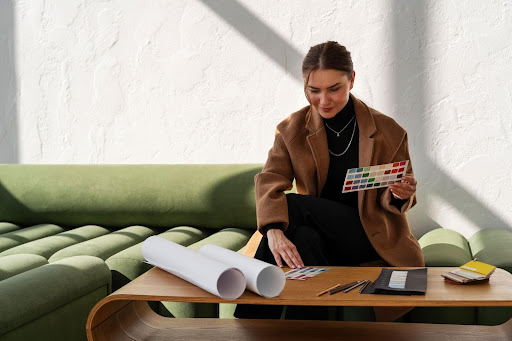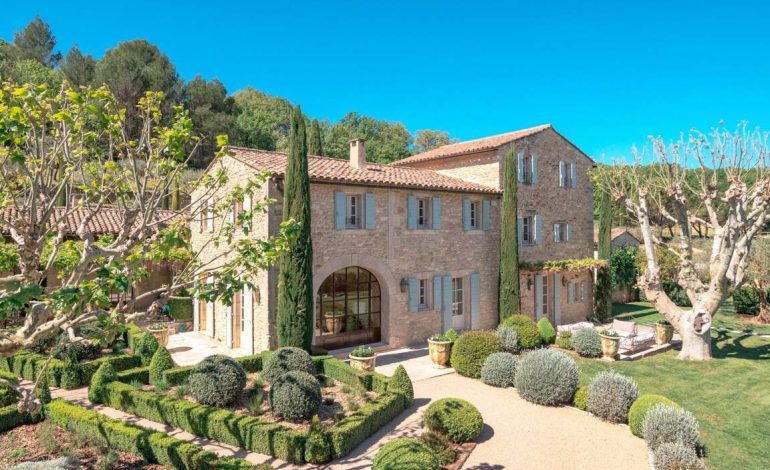How Eco-Conscious Design Choices Are Transforming Living Spaces

Living Spaces during previous periods, interior design primarily emphasized both visual aesthetics and convenience,e along with occasional luxurious features. Eco-conscious design represents a new movement that transforms home design thinking throughout today’s world. The transition toward sustainable design represents a fundamental shift now and into the future since environmental mindfulness and health priorities, and responsibility-driven purchasing power combine to drive these lasting changes.
Sustainable material selection for both furniture and flooring, together with strategic lighting techniques,s transforms residential spaces into smart and responsible architectural environments. Thoughtful decisions now reshape living spaces by delivering better functionality along with greater comfort and peace of mind.
Modern homes are transforming in purpose and appearance because environmentally friendly materials and energy-efficient layouts, along with mindful consumption practices,s have taken control.
Rethinking Materials: The Shift to Sustainability
Environmental interior transformations start with carefully selected materials as one of their primary impacts. Materials that consist of plastic alongside synthetic textiles and treated wood demand extensive manufacturing energy while requiring damaging substances during production. Substituting interior materials with bamboo alongside reclaimed wood and cork, together with recycled metal and organic cotton, results in significant environmental improvements.
Bamboo stands out as a perfect hardwood replacement because it quickly matures and naturally renews itself, so it works well for floors and cabinets. Using recycled wood creates both authentic decorative appeal along decreased resource consumption in the wood supply chain. Textiles made from hemp and linen now act as sustainable replacements for synthetic upholstery materials while providing long-lasting durability, coupled with ecological benefits.
Modern designers use these natural materials because they provide both environmentally sound advantages and attractive textural qualities with warm colors in home decoration. Homeowners currently yearn for that land-linked connection and grounded feeling that these material choices bring to their homes.
Energy Efficiency as a Design Principle
Previously, energy efficiency played only a secondary role when designing homes. The essential concept now directs the foundation of architecture and interior decoration practices. Passive design features form the essential component of green living spaces because they minimize reliance on manufactured heating and cooling, and lighting systems.
A house’s energy consumption declines substantially when windows receive proper positioning and houses face certain orientations, along with proper insulation installation. Householders install skylights for both visual appeal and to trap natural illumination, so they need less artificial light during daytime hours. Through their combination with LED lighting systems, homeowners can use smart thermostats to manage their energy consumption at their comfort level.
Energy-efficient designs deliver both utility bill savings and enhanced residential comfort in addition to their benefits. The system combines temperature stabilization with indoor air quality enhancement, which results in better homeowners’ well-being.
The Rise of Multi-Functional Spaces
The practice of eco-conscious living extends beyond utility choices and material selections into spatial management design principles. People are no longer demanding larger homes instead, they choose designs that maximize space utilization.
Open floor plans in combination with movable partitions plus multi-purpose furniture make up the essence of this design transformation. Flexible furniture design and innovative floor plans enable one space to function as a work area during weekdays before becoming a family gathering spot when the day ends. The space-saving nature of these designs enables homeowners to use smaller homes at lower costs for both construction materials and ongoing maintenance needs.
Minimalist design combined with functionality does not require compromising style. The decision for eco-conscious living through this design approach yields interiors that are both straightforward and harmonious and conform to the green ethical principles.
Integrating Nature Indoors
Eco-conscious design activates a stronger relationship between people and natural environments. Bringing the outdoors into indoor spaces constitutes one method of achieving eco-conscious design. Sustainable homes now feature indoor plants along with green walls and compact indoor gardens as widespread decorative elements.
Natural light penetration occurs through two key aspects of environmental design: extensive windows and open plans, and the intentional incorporation of reflective surfaces and light-hued walls. Natural illumination becomes more prominent while creating better atmospheric feelings within spaces as a result of these design choices.
The application of biophilic design embeds natural features into buildings and indoor areas to develop therapeutic workplaces where productivity increases alongside diminished stress. Embedded in your interiors, you can find a connection to nature through vertical kitchen gardens and stone and wood textures that provide relaxation and environmental friendliness.
Conscious Consumption and Timeless Design
A critical part of eco-conscious design is the principle of mindful consumption. Rather than frequently replacing items to follow trends, homeowners and designers are opting for pieces that are durable, repairable, and timeless.
This means investing in quality furniture that can last decades, choosing neutral palettes that don’t go out of style, and selecting classic pieces that serve multiple functions. The goal is to reduce waste by extending the life of products and reducing the need for constant replacements.
Here is where the guidance of a sustainable Interior Designer can make a profound difference. These professionals not only understand how to source environmentally friendly materials and energy-efficient products but also how to create cohesive designs that stand the test of time. Their expertise ensures that a home not only looks beautiful but also supports a sustainable lifestyle in the long run.
Recycling, Upcycling, and DIY Creativity
The trend of upcycling combined with repurposing has experienced a major resurgence. Many environmentally aware people who live in homes now look for innovative ways to extend the lifespan of outdated furniture items instead of throwing them away. DIY upcycling teaches valuable skills by guiding individuals on how to revamp vintage dressers and repurpose old ladders and wood pallets into functional furniture pieces while lowering landfill waste numbers.
The design industry has embraced storytelling as it produces furniture pieces that reflect individual histories. The human connection people experience within their spaces through this approach leads to both ownership and pride in their homes.
Cleaner Air and Healthier Living
Traditional interior materials that include paints and adhesives and synthetic furnishings, easily emit dangerous chemicals through the air without being noticeable. Building designs that prioritize eco-friendliness utilize environmentally responsible finishes and cleaning agents, together with paints that have low VOC emissions to create wholesome indoor environments.
Health-conscious design principles include HVAC system investments together with the incorporation of air-cleaning plants and materials designed to reduce allergies. These crucial elements become vitally important when families include children or senior citizens, or people with respiratory illnesses in their household.
Ecologically aware design layouts protect the environment yet simultaneously produce wellness advantages for building occupants.
Embracing Technology for a Greener Home
Sustainable interior design receives essential support from modern technology. Automated lighting combined with sustainable water-saving devices in modern smart home systems allows homeowners to achieve environmental targets while maintaining everyday ease of use.
The market is seeing growing adoption of smart irrigation system,s together with solar panel installations and environmental appliances. Practical additions to homes prove efficient and can enhance property values at time of sale.
Designer creations merge sustainable principles with technological integration to develop eco-friendly spaces that operate at the same level of innovation.
Conclusion:
Eco-conscious design establishes itself as a comprehensive life framework that combines environmental stewardship with health promotion for people alongside visual excellence. Thoughtful material selection, space optimization, and the use of functional and peaceful design elements transform interior space into sustainable environments that shape modern home experiences.
People who follow these principles create living spaces that express their values while minimizing their environmental footprint and supporting wellness. Working directly with a sustainable Interior Designer or creating your sustainable solutions leads to a better future because they are both steps in eco-conscious living.









